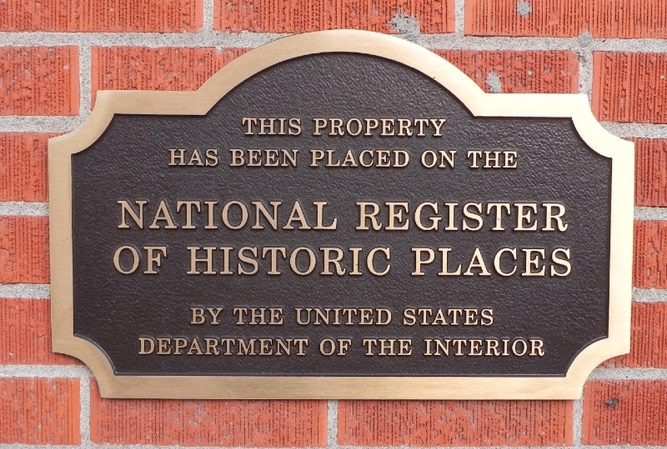And What Acceptance Means for Home Remodeling in the Future
The National Register of Historic Places is an official list of places deemed worthy of preservation, authorized by the National Historic Preservation Act of 1966. The program, which the National Park Service oversees, coordinates “efforts to identify, evaluate, and protect America’s historic and archeological resources.”
For some owners of important historic homes, being accepted to the program is a bucket list item. And in Kansas City, it’s likely that a number of historic homes qualify, particularly due to our history with Harry S. Truman and a number of other important Missouri figures, like Jesse James, Charlie Parker, Walt Disney, Buck O’Neil, Satchel Paige, Ginger Rogers, Count Basie, and Thomas Hart Benton, for example.
Keep reading to learn more about the application process, how properties are selected, and what it means for your future historic home remodeling plans, should your home make the list.
Basic Criteria a Historic Home Must Meet
To be qualified for listing on the National Register of Historic Places, a building must be significant to American history, architecture, archeology, engineering, or culture, plus have integrity of location, design, setting, materials, workmanship, feeling, and association. The building must also meet one of the following:
- Associated with events that made a significant contribution to the broad patterns of American history.
- Associated with the lives of significant people or historical figures.
- Embody distinctive characteristics of a type, period, or method of construction, or represent the work of a master, or possess high artistic values, or represent a significant and distinguishable entity whose components may lack individual distinction.
- Have yielded, or may be likely to yield, important information about history or prehistory.
In Kansas City, a historic home may very well embody distinctive characteristics of a type, period, or method of construction – and because many historical figures have passed through our region, it is possible that your historic home meets that qualification, too. But research through the Jackson County Historical Society – or your own county’s historical society – is necessary before you submit an application. Bear in mind, however, that a property is required to retain most or all of its historic physical characteristics in order to be eligible for listing.
Request an Evaluation of Your Historic Home
Submit your nomination through the State Historic Preservation Office (SHPO). This process requires you to complete a nomination form.
Then, the Missouri SHPO will notify property owners, local governments, and the public that your property is being considered for the Register. The National Park Service then completes a Determination of Eligibility (DOE).
After a lengthy board review, which takes a minimum of 90 days, any recommended registry is submitted to the National Park Service in Washington, D.C. for final review. The National Park Service will make their decision about your historic home within 45 days of submission.
Benefits of Listing
The biggest driver for why someone would want to list their home in the National Register of Historic Places is for the formal recognition they’ll receive. It ensures their home is part of the National Register Archives, which provides history researchers with valuable information. Being part of the Register helps to encourage preservation of historic resources – namely, your historic home.
Perhaps the most important benefit of being on the Register is the ability to access preservation incentives, such as preservation grants, federal investment tax credits, and possible state tax and grant opportunities.
History buffs also will love the opportunity to network with other historic property owners, take tours, and work directly with preservationists and their organizations.
Finally, you’ll receive a bronze plaque to distinguish your property as being listed on the National Register of Historic Places – and that can immediately add perceived value with buyers should you ever sell your property, or if you intend to rent out portions of your property as a bed and breakfast or small wedding venue.
Does the Registry Affect Home Remodel Plans?
Contrary to popular belief, being listed on the National Register of Historic Places does not interfere with what a non-federal owner can do with their property, including total destruction, unless you’ve received Federal assistance, such as funding, for special projects.
However, your city’s zoning bylaws and other ordinances may restrict what you can do if your historic home is located in a town historic district. Being on the Register does not automatically deem your home as being located in a historic district. Regardless of your home’s Register status, you’ll want to check with the city before painting your home’s exterior or working with a home renovation company if your house is located in a historic district. Individual states’ historic registers may also regulate home remodeling or renovation, so be sure to check with them, too.
Conversely, being on the National Register of Historic Places may qualify you for grants or tax incentives if you opt for a home remodel that conforms to historically authentic design and workmanship. In this case, not just any home renovation company will do. You need one with a staff who have mastered craftsmanship from the era in which your home was built, and who understands the architectural and historical significance of every element, down to pieces of trim boards and rafter dimensions.
Our Home Renovation Company Tells the Story of Your Historic Home
Kansas City homes built before the 1940s were here for the majority of events that led to the establishment of our region and what makes our city what it is today.
Whether your historic home was erected in the era of steam trains rolling across the prairie, or if it saw Harry S. Truman stroll through town on his morning walks, you’ll want to ensure whatever home remodeling project you embark on won’t interfere with the integrity and story of your home.
Let Architectural Craftsmen help you write its next chapter. Contact us to learn more about how we transform homes to useful living spaces, without compromising the most important part: history.


